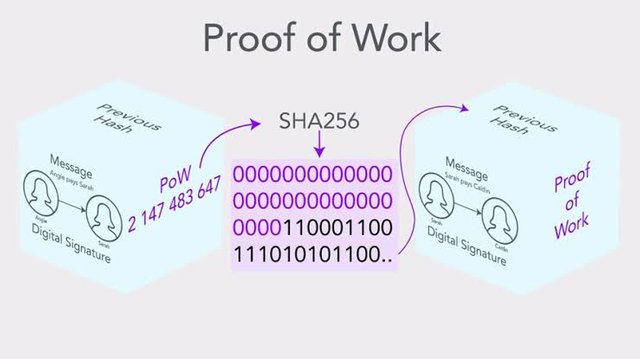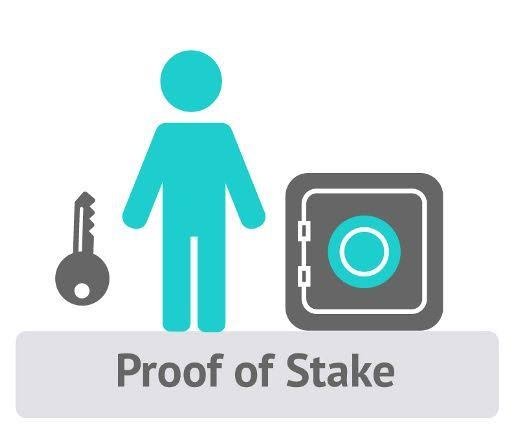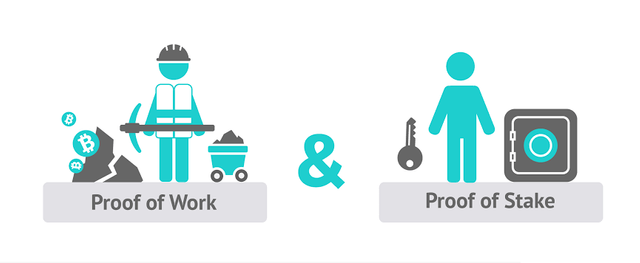Different types of Consensus Mechanisms - Steemit Crypto Academy Season 5 - Homework Post for Task 6.
(1) What is the difference between PoW & PoS? Advantages & Disadvantages? Which one is better in scaling Capacity? Examples?
What is the difference between PoW & PoS?
PoW:-
It is used to verify a particular mathematical downside that a PC's package must accommodate, once this downside is properly resolved, it must be verified by the system, and used Can be done by different users. approved by.
At the end of this method, they are rewarded with tokens, which can be used for whatever the user does. In general, this is often referred to as "cryptocurrency mining".
It is worth noting that once a user violates an activity predicted by the system, the blockchain detects it and removes the power to switch the system, while not receiving any sort of reward. .
With the extra machine power you have, mathematical issues are being solved with great ease and speed.
PoS:-
Users invest a precise amount of tokens within the system over a precise amount of time to become your node or validator.
Validators work so transactions between users or system bound functions, square measure properly. The more resources that are entered into the system, the greater the verification of the system and the stronger the chances of turning it into a validator.
Typically, validators of this technology class measure selected through Stacks are ready to belong to the blockchain network and complete their tasks.
Rewards within the POS system are paid out by commissions charged within the system's transactions, these commissions are in many cases awarded with a special token from the system with a square measure, however, they serve a consistent purpose.
difference between PoW & PoS:-
In PoW, the probability of mining a block is determined by the number of PC work performed by a mineworker, whereas in PoS, the probability of a new block being confirmed or verified is determined by the number of privately owned coins. , and during this latter case, the amount of coins one has matters.
In PoW a will is issued to the primary miner to solve the science or labor proof puzzle of each block and what is this science puzzle
The cryptographic puzzle is all about miners hunt down their computing power to generate fast numbers on an irregular basis, and if they make the winning variety, they win the lottery, whereas in PoS, the validator has to block, But it doesn't get reward.
The network receives fees as its reward, and in the course of this case, a validator is someone who is tasked with checking or verifying blockchain transactions, whether they are legal or not and whether or not they are correct.
In PoW, to connect each block to the chain, miners must use their PCs to {control|to government} or control information to solve difficult puzzles, while
Proof of Stake, there is no conflict as the block producer is chosen by an algorithmic program that is backed on a user token or reward.
In proof of work (PoW), for hackers to be willing to link or be part of an abusive block, it is necessary that they need one-fiftieth of the computation power, and this computation power refers to how much of the machine Daud can do it fast. Operating, while in proof-of-stake (PoS), may require that hackers have access to all but one of the digital currencies on the network, which is out of the question.
Proof of work systems are energy inefficient and low cost, while proof of stake systems are more cost effective and energy economical than captive systems.
Process in PoW is a device designed to make the most of power, whereas in PoS, a typical server grade unit will accomplish this.
In PoW, the primary investment is to obtain hardware, while the initial investment in PoS is to obtain a token or coin and improve the situation.
Bitcoin is the most popular well-known digital currency that uses a proof-of-work mechanism, or agreement building algorithm program that uses the most important standard proof-of-work called SHA256, whereas in PoS, many cryptocurrencies that use different types of Proof-of-stake contracts are used for: Tezos, Cardano, Cosmos, etc.
Advantages & Disadvantages?
POS Advantages:-
PoS allows operations and transactions to be made faster and simpler, while creating confidence and security for the user or capitalist.
It doesn't require huge technical equipment (hardware) or superpower, anyone with a handy laptop will do the job.
The energy consumption is lowest due to the low demand for stylish instrumentation, hence serving the environmental plan.
In alternative systems with PoS, in vast systems, it is necessary to anticipate that cash is often used as a direct investment.
POS Disadvantages:-
Those with higher capital gain higher rewards by centralizing cash and power among systems.
The Blockchain Sector Unit is even more liable for all attacks because the intruders have only half the coins on the blockchain.
The system always favors users who have a lot of stakes with the UN agency, this shows that not every user has equal power between the system and blockchain technology.
Advantages of PoW:-
It ensures that the distributed ledger, known as the blockchain; be completely decentralised.
It is considered a reasonably secure compromise protocol.
Miners are rewarded with transaction fees and fees for each completed block.
Disadvantages of PoW:-
A lot of computing supply and power expenditure is wasted just generating random guesses.
If proof of work continues, we could be in a state of "common people's tragedy" somewhere in the future, once we're given lots of mining rewards, miners just getting paid to deal with the exploitation. can, plus the deal is significantly cheaper. For miners, they will settle for any fee that may step-by-step individuals pay less fees and miners make less money; Over time, some miners may mine cryptocurrencies such as bitcoin; And at the same time network problems can be reduced, because fifty-one of these attacks are very prone.in limited quantity
Which one is better in scaling Capacity? Examples?
In my investigation, I would argue that part of the stake is likely to grow on powder, given the way labor (POH) limits the amount. The next area unit 2 POS cases are coming up, and those area units are Ethereum and NXT Coin. We should always reflect them.
Ethereum:-
while proof of stake was harder to know than a prisoner of war in the context of a settlement target on the network, Ethereum could be on par with being one of the most important cryptocurrencies that is solidly proof-based.
In the Stake concept, that effort has always been directed toward the Ethereum phenomenon, especially since the start of their part two upgrade.
As an example, the Ethereum User Area entity needs to estimate thirty-two eth to be able to validate transactions, as they are chosen on an irregular basis, and additionally verify and manage those blocks. . Which is the field unit under his supervision.
Nxt:-
This is another powerful example of a Proof of Stake (PoS) system. Their block area unit is created on average every single minute by accounts which is the area unit opened by the computer supporting the network and reproduced by a formation method.
Conclusion:-
Security is equally taken into account throughout this system, preventing cyber attackers from creating new chains from the primary block.Security is kept in mind throughout the system, as computerized attackers are defeated by creating a new chain from the main block.
.jpeg)
.jpeg)
.png)
.jpeg)
.jpeg)